Silverline 568917 Handleiding
Silverline
Detector
568917
Bekijk gratis de handleiding van Silverline 568917 (3 pagina’s), behorend tot de categorie Detector. Deze gids werd als nuttig beoordeeld door 82 mensen en kreeg gemiddeld 4.5 sterren uit 41.5 reviews. Heb je een vraag over Silverline 568917 of wil je andere gebruikers van dit product iets vragen? Stel een vraag
Pagina 1/3

568917
Version date: 09.01.2017
GB
FR
DE
FR Détecteur de métal et de tension
DE Metall- und Leitungsdetektor
ES Detector de voltaje y metal
IT Rivelatore di metalli e tensione
NL Metaal en spanning detector
PL Wykrywacz metalu i napięcia
Metal & Voltage Detector
Register online: silverlinetools.com
3
GUARANTEE
YEAR
ANS DE GARANTIE
JAHRE GARANTIE
AÑOS DE GARANTÍA
ANNI DI GARANZIA
JAAR GARANTIE
LATA GWARANCJI
silverlinetools.com
1
2
4
3
Before Use
1. Remove the left side panel (the side that carries the Silverline label) of the device
2. Connect a 9V (PP3) battery and insert it into the housing
NOTE: Some rechargeable batteries do not output 9V but instead 7.2V, and may not be suitable for this device
3. Replace the side panel
Operation
Switching on and off
1. Rotate the On/Off Switch and Adjustment Wheel (4) until it clicks
2. To switch off after use, rotate the on/off switch wheel into the opposite direction until it clicks
Adjusting
1. After switching on, continue turning the wheel until the Indicator LED (3) illuminates and the audible signal
sounds, then turn the dial back a little, just until the sound stops and the LED is switched off. The device is now
ready to be used in either metal or voltage detection mode
2. Rotating the dial further back will decrease the detection sensitivity
Metal Detection
1. Place the metal detection panel (bottom of the tool) against a metal object to test that the unit works. The
Indicator LED (3) will illuminate if functioning correctly, and the audible signal will sound
2. Hold the metal detection face against the wall being tested
3. Slide the unit over the detection area, making sure it remains in contact with the surface of the wall
4. The LED indicator will illuminate when ferrous metal is detected, and the audible signal will sound
Voltage Detection
1. Place the voltage detection panel (front of the tool) against a known source of electricity. The Indicator LED (3)
will begin to blink and the device will emit an audible ticking signal if functioning correctly
As part of our ongoing product development, specications of Silverline products may alter without notice.
General Safety
Carefully read and understand these instructions, information on the packaging and any label attached
to the tool before use. Keep these instructions with the product for future reference. Ensure all persons
who use this product are fully acquainted with these instructions.
• Always switch off electrical circuits when working close to exposed or concealed electrical wires
• Use extreme caution when drilling, sawing and driving nails or staples into walls, oorboards and ceilings
that contain electrical wires or pipework, or where such items can be expected. Damaged cables in walls,
oors or ceilings can cause electric shocks or start res. Damaged pipes can cause electric shocks, ooding
or gas leaks
• The detection performance of this device can vary depending on factors such as material, density, thickness,
foil backing, insulation, shielding, etc.
• This unit will not detect shielded conductors (i.e. electricity sources which are inside metal conduits). In this
case, use the metal detection mode to determine the location of the conduit instead
• Static electricity can cause false readings. Discharge by touching an earthed surface (e.g. the case of an
earthed appliance that is plugged into a wall socket or a water tap) before use. If you rub the detector along
the wall it is possible to generate static electricity, and some walls may already hold a static charge. Discharge
as described, should false readings occur
• After switching on, always test the device on a known voltage source/metal object
Product
Familiarisation
1. Metal Detection Panel
2. Voltage Detection Panel
3. Indicator Light
4. On/Off Adjustment Wheel
2. Hold the voltage detection face against the wall being tested
3. Slide the unit over the detection area, making sure it remains in contact with the surface of the wall
4. The LED indicator will begin to blink and the device will emit an audible ticking signal if a source of electricity
is detected
WARNING: If a live wire is not detected in an area where expected, proceed with caution. It is possible the live
wire is located too deep within the wall, or it is shielded, preventing detection.
WARNING: If a live wire is detected over a wide area, it is possible there is damage to the insulation of the cable,
and the wall is damp, creating a dangerous situation where an area of the wall becomes conductive. Consult a
qualied electrician immediately.
Maintenance
• Keep your tool clean at all times. Dirt on the detection faces could affect the detection performance
• Clean the body of your tool with a soft brush, or dry cloth. Do not use aggressive cleaning agents on plastic
surfaces
Storage
• Store this tool carefully in a secure, dry place out of the reach of children
• If storing the device for a long period of time without use, the battery should be removed and stored
separately
Disposal
Always adhere to national regulations when disposing of power tools that are no longer functional and are not
viable for repair.
• Do not dispose of power tools, or other waste electrical and electronic equipment (WEEE), with household
waste
• Contact your local waste disposal authority for information on the correct way to dispose of power tool
Specication
Battery Type: ....................................PP3/9V
Detection signal: ...................................LED
(continuous and blinking)
audible signals (continuous
beep and ticking sound)
Avant utilisation
1. Retirer le côté gauche (avec l’étiquette Silverline) de l’appareil.
2. Brancher une pile 9V PP3 dans le compartiment prévu à cet effet
Note : Quelques piles rechargeables ne fournissent pas de tension de sortie de 9 V, mais de 7,2 V, et elles
peuvent ne pas être compatibles avec cet appareil.
3. Remettre le côté gauche en place.
Instructions d’utilisation
Mettre en marche/arrêt
1. Tourner l’interrupteur on/off et la molette de réglage jusqu’au déclic.
2. Pour arrêter, tourner la molette dans l’autre direction jusqu’au déclic.
Réglage
1. Après avoir mis en marche, continuer de tourner la molette jusqu’à ce que le témoin LED s’illumine et que
le signal sonore se mette en marche, puis tourner légèrement la molette dans le sens contraire jusqu’à ce le
signal sonore et lumineux s’éteignent. L’appareil est donc prêt à l’emploi.
2. Pour diminuer la sensibilité du détecteur, continuer à tourner la molette dans le sens opposé.
Détecteur de métaux
1. Placer le pan de détection de métaux (partie basse de l’appareil) contre un objet en metal pour effectuer un
test. Le témoin LED (3) s’allumera et le signal sonore sonner si l’appareil fonctionne bien.
2. Placer le détecteur de métaux contre le mur à tester
3. Faire glisser le détecteur le long du mur tout en y restant en contact.
4. Le témoin LED s’allumera et le bip s’activera en cas de détection d’un objet en métal ferreux.
Détecteur de tension
1. Placer le pan de détecteur de tension (sur l’avant de l’appareil) contre une source connue d’électricité. Le
témoin LED (3) s’allumera et le signal sonore sonner si l’appareil fonctionne bien.
Du fait de l’évolution constante de notre développement produit, les caractéristiques des produits Silverline
peuvent changer sans notication préalable.
Consignes générales de sécurité
Lire attentivement et comprendre ces instructions, informations sur l’emballage et toutes étiquettes
de l’appareil, avant toute utilisation. Garder les instructions avec le produit pour référence ultérieure.
S’assurer que toutes les personnes utilisant cet appareil ont pris connaissances de ces instructions.
Toujours déconnecter les circuits électriques s‘il y a des câbles électriques exposés ou dissimulés
Procéder avec prudence lors de perçage, sciage, clouage ou agrafages dans les murs, planchers ou plafonds
car il peut y avoir des câbles électriques, canalisations ou autres. Des câbles endommagés peuvent entraîner
des chocs électriques ou provoquer des incendies. Des canalisations peuvent engendrer des chocs électriques,
inondations ou fuites de gaz.
La performance de détection de cet appareil varie selon plusieurs facteurs tel que le matériau, la densité,
l’épaisseur, l’isolation, support métallique, etc.
Cet appareil ne détecte pas les conducteurs isolés (par exemple des sources électriques à l’intérieur de conduit
métallique). Dans ce cas le détecteur de métal détermine la position du conduit.
L’électricité statique peut fausser la lecture des résultats. Pour décharger l’électricité statique en touchant une
surface mise à la terre (comme un appareil branché sur une prise murale, ou un robinet) avant utilisation. En
frottant le détecteur contre un mur, il y a une possibilité de produire de l’électricité statique (certains murs sont
déjà chargés d’électricité statique). Décharger comme indiqué ci-dessus), pour éviter une fausse lecture.
Présentation
du produit
1. Pan de détection des métaux
2. Pan de détection des tensions
3. Témoin LED
4. Interrupteur marche/arrêt et
molette de réglage
2. Placer le détecteur de tension contre le mur à tester.
3. Faire glisser le détecteur le long du mur tout en y restant en contact.
4. Le témoin LED s’allumera et le bip s’activera en cas de détection d’une source électrique.
ATTENTION : Si un câble sous tension n’est pas détecté dans une zone où il est supposé en avoir un, procéder
avec précaution. Il se peut que le câble soit trop en profondeur ou qu’une protection empêche la détection.
ATTENTION : Si un câble sous tension est détecté sur un large surface, il est possible que la gaine d’isolation
du câble soit endommagée et que le mur soit humide, ce qui peut être dangereux car le mur peut être alors
conducteur. Consulter immédiatement un électricien qualié.
Entretien
• Gardez l’appareil toujours propre. La saleté sur les pans du détecteur peut affecter la performance de
détection.
• Utilisez une brosse souple ou un chiffon sec pour le nettoyage. Ne pas utiliser d’agent de nettoyage agressif
sur les parties plastiques.
Stockage
• Ranger cet outil dans un endroit sûr, sec et hors portée des enfants
• Si l’appareil doit être rangé pour une longue période avant d’être utilisé, la pile doit être retirée et rangée
séparément.
Recyclage
Lorsque l’appareil n’est plus en état de fonctionner et qu’il n’est pas réparable, recyclez l’appareil en accordance
avec les régulations nationales.
• Ne jetez pas les outils électriques et autres équipements électriques ou électroniques(DEEE) avec les ordures
ménagères
• Contactez les autorités locales compétentes en matière de gestion des déchets pour vous informer de la
procédure à suivre pour recycler les outils électriques
Caractéristiques
techniques
Type de pile: ...............................9 V (PP3,)
Signal de détection: ....................Témoin LED
(ash en continu) Signal
sonore (bip en continu)
Vor Inbetriebnahme
1. Nehmen Sie die linke Seitenabdeckung des Gerätes (mit dem Silverline-Logo) ab.
2. Schließen Sie eine 9-V-Blockbatterie (PP3) an, und legen Sie diese ins Gerätegehäuse ein.
HINWEIS: Manche 9-V-Akkus liefern lediglich eine Spannung von 7,2 V. Dies kann evtl. nicht für den korrekten
Betrieb des Gerätes ausreichen.
3. Verschließen Sie die Abdeckung.
Bedienungsanleitung
Ein- und Ausschalten
1. Drehen Sie den Ein-/Ausschalter Drehregler (4) zum Einschalten des Gerätes bis dieser ein Klick-Geräusch
abgibt.
2. Drehen Sie den Drehregler zum Ausschalten in die entgegengesetzte Richtung, bis dieser erneut klickt.
Einstellen
1. Drehen Sie den Ein-/Ausschalter Drehregler (4) nach dem Einschalten weiter in die Einschaltrichtung,
bis die LED (3) aueuchtet und das Gerät ein akustisches Signal abgibt (Dauerton). Drehen Sie den
Regler anschließend ein kleines Stück zurück, bis die LED erlischt und der Ton aussetzt. Das Gerät ist nun
betriebsbereit.
2. Ein weiteres Zurückdrehen des Drehreglers vermindert die Sensitivität des Detektors.
Metallsuche
1. Legen Sie die Kontaktäche für Metallsuche (1) (Unterseite des Gerätes) gegen ein Metallobjekt,
um die Funktion des Gerätes zu überprüfen. Die LED (3) wird aueuchten, und das Gerät wird
einen Dauerton abgeben, wenn es ordnungsgemäß funktioniert.
2. Halten Sie die Kontaktäche für Metallsuche gegen die zu untersuchende Fläche.
3. Führen Sie das Gerät langsam über die Oberäche und achten Sie darauf, dass die Kontakt
äche des Gerätes stets in Kontakt mit der zu untersuchenden Oberäche steht.
4. Die LED wird aueuchten sobald Metall gefunden wird, und das Gerät wird einen Dauerton abgeben.
Leitungssuche
1. Legen Sie die Kontaktäche für Leitungssuche (2) (Vorderseite des Gerätes) gegen eine bekannte
Spannungsführende Leitung, um die Funktion des Gerätes zu überprüfen. Die LED (3) wird zu blinken beginnen,
und das Gerät wird ein Tick-Geräusch abgeben, wenn es ordnungsgemäß funktioniert.
Aufgrund der fortlaufenden Weiterentwicklung unserer Produkte können sich die technischen Daten von
Silverline-Produkten ohne vorherige Ankündigung ändern.
Allgemeine Sicherheitshinweise
Lesen Sie diese Anleitungen sowie alle Informationen auf der Verpackung und dem Gerätegehäuse
aufmerksam durch bevor Sie das Gerät betreiben. Bewahren Sie diese Anleitung zum zukünftigen
Nachschlagen mit dem Gerät auf. Stellen Sie sicher, dass sich alle Personen, die das Gerät verwenden,
zuvor mit diesen Anweisungen vertraut machen.
• Denken Sie daran den Sicherungsautomaten für die jeweilige erkannte Leitung auszuschalten bevor Sie mit
Arbeiten in der Nähe von frei liegenden oder versteckten Leitungen beginnen.
• Gehen Sie äußerst vorsichtig vor, wenn Sie in Wände, Fußböden und Decken Bohren, Sägen oder Nägel/
Klammern einschlagen möchten, in welchen elektrische Leitungen oder Rohrleitungen verlegt sein könnten.
Beschädigte elektrische Leitungen können elektrische Schläge und Brände verursachen. Beschädigungen an
Rohrleitungen können zu elektrischen Schlägen, Überutung und Gasleckagen führen.
• Die Sensibilität und Genauigkeit dieses Gerätes kann unterschiedlich sein und hängt von Faktoren wie
Wandmaterial, -dichte, -stärke, -beschichtung, -isolation, -abschirmung usw. ab.
• Dieses Gerät ist nicht in der Lage abgeschirmte Leiter aufzuspüren (d.h. Leitungen die in Kabelkanälen
und Metallrohren verlegt sind). Verwenden Sie die Metallsuchfunktion des Gerätes, um die metallischen
Kabelkanäle und -rohre zu nden.
• Das Vorhandensein statischer Elektrizität kann zu Abweichungen und Fehlanzeigen führen. Erden Sie sich
daher vor der Benutzung durch Anfassen einer geerdeten Oberäche (wie z.B. das Metallgehäuse eines
geerdeten und ans Stromnetz angeschlossenen Gerätes, oder eines Metallwasserhahnes). Wenn Sie den
Detektor über die Wand führen kann es auch dort zu statischer Auadung kommen, bzw. Wände können
bereits statisch aufgeladen sein. Erden Sie sich und das Werkzeug erneut, falls der Detektor fragwürdige
Ergebnisse liefert.
• Testen Sie die Funktion des Gerätes nach dem Einschalten stets an einer bekannten Spannungsquelle und
einem metallischen Objekt.
Produktübersicht
1. Kontaktäche für Metallsuche
2. Kontaktäche für Leitungssuche
3. Anzeige-LED
4. 4Ein-/Ausschalter Drehregler
2. Halten Sie die Kontaktäche für Leitungssuche gegen die zu untersuchende Fläche.
3. Führen Sie das Gerät langsam über die Oberäche und achten Sie darauf, dass die Kontaktäche des Gerätes
stets in Kontakt mit der zu untersuchenden Oberäche steht.
4. Die LED wird blinken sobald eine spannungsführende Leitung gefunden wird, und das Gerät wird ein
Tick-Geräusch abgeben.
WARNUNG: Falls das Gerät an einer Stelle, wo Sie eine Wechselstromleitung vermuten, keine solche anzeigt,
gehen Sie mit Vorsicht vor! Evtl. liegt die Leitung zu tief in der Wand oder sie ist auf irgendeine Art und Weise
abgeschirmt.
WARNUNG: Falls der Detektor eine Wechselstromleitung über einen größeren Wandbereich hinweg anzeigt,
kann es möglich sein, dass die Isolierung einer Leitung beschädigt ist, und dadurch ein feuchter Wandbereich
stromführend wird. Dies ist eine gefährliche Situation, und Sie sollten unmittelbar einen qualizierten Elektriker
konsultieren.
Wartung
• Halten Sie Ihr Gerät stets sauber. Schmutz auf den Kontaktächen des Gerätes vermindert seine Leistung
und Genauigkeit.
• Reinigen Sie das Gerätegehäuse mit einer weichen Bürste oder einem trockenen Tuch. Verwenden Sie keine
aggressiven Reinigungsmittel auf Kunststoffoberächen.
Lagerung
• Lagern Sie das Gerät an einem sicheren, trockenen Ort außerhalb der Reichweite von Kindern
• Entfernen Sie stets die Batterie wenn Sie das Gerät für längere Zeit nicht benutzen werden, und bewahren
Sie diese separat auf.
Entsorgung
Beachten sie bei der Entsorgung von defekten und nicht mehr reparablen Elektrowerkzeugen geltende
Vorschriften und Gesetze.
• Elektrowerkzeuge und andere elektrische und elektronische Altgeräte nicht über den Hausmüll entsorgen.
• Lassen Sie sich von der zuständigen Behörde bezüglich der ordnungsgemäßen Entsorgung von
Elektrowerkzeugen beraten.
Technische Daten
Batterietyp:........................9-V-Blockbatterie
(PP3, nicht im Lieferumfang enthalten)
Signal: ..................................................LED
(kontinuierlich aueuchtend
oder blinkend) Akustische Signale
(kontinuierlich oder Intervall-Tickern)

ES
IT
NL
PL
silverlinetools.com
• Una vez encendido el detector, se recomienda probar el dispositivo en una fuente con tensión o sobre un
objeto metálico.
Antes de utilizar
1. Retire el panel del lado izquierdo (dónde está situada la etiqueta Silverline).
2. Inserte la pila de 9 V (PP3) en el detector.
NOTA: Algunas pilas recargables ofrecen un voltaje máximo de 7,2 V, el cual será insuciente para utilizar con
esta herramienta.
3. Vuelva a colocar el panel lateral.
Instrucciones de funcionamiento
Encendido/apagado
1. Gire el interruptor de encendido/apagado y rueda de ajuste (4) hasta que haga clic.
2. Para apagar el detector, gire la rueda en sentido opuesto hasta que haga clic.
Ajuste de detector
1. Después de encender el detector, gire la rueda hasta que el indicador LED (3) se ilumine y emita una señal
audible. A continuación, vuelva a girar ligeramente la rueda en sentido opuesto hasta que la señal audible
deje de sonar y la luz LED se apague. El detector estará preparado para detectar voltaje y metal.
2. Girar la rueda en sentido opuesto reducirá la capacidad de detección.
Detección de metal
1. Coloque el detector de metal (parte inferior) sobre un objeto metálico para comprobar que el equipo funcione
correctamente. La luz LED (3) debería iluminarse, también debería escuchar una señal audible.
2. Sujete la cara detectora de metal sobre la pared.
3. Deslice el detector sobre la supercie, asegúrese que el detector esté en contacto con la supercie de la pared.
4. El indicador LED se iluminará y escuchará una señal audible cuando detecte metales ferrosos.
Como parte de nuestra política de desarrollo de productos, los datos técnicos de los productos Silverline pueden
cambiar sin previo aviso.
Instrucciones de seguridad
Lea cuidadosamente y asegúrese de entender este manual y cualquier otra indicación antes de usar este
producto. Guarde estas instrucciones con el producto para poderlas consultar en el futuro. Asegúrese de
que todas las personas que utilizan este producto están completamente familiarizadas con este manual.
• Desconecte siempre los circuitos eléctricos cuando trabaje en áreas expuestas o cubiertas de cables eléctricos.
• Tenga mucha precaución al taladrar, serrar y clavar clavos o grapas en paredes, tarimas y techos que
contienen cables eléctricos o tuberías. Los cables dañados en paredes, suelos o techos pueden causar
descargas eléctricas o incendios. Las tuberías dañadas pueden causar descargas eléctricas, inundaciones
o fugas de gas.
• El funcionamiento del detector puede variar dependiendo de varios factores tales como el material, densidad,
espesor, revestimiento, aislamiento, blindaje, etc.
• Esta herramienta no puede detectar conductores apantallados (es decir, fuentes de electricidad que se
encuentran dentro de conductos metálicos). En este caso, deberá utilizar el modo de detección de metales
para determinar la ubicación exacta.
• La electricidad estática puede causar lecturas incorrectas. Descargue la electricidad estática en una supercie
conectada a tierra antes de utilizar el detector (por ejemplo, el caso de un aparato con toma a tierra conectado
a un enchufe o un grifo de agua). Frotar el detector a lo largo de la pared se puede generar electricidad
estática, algunas paredes pueden retener cargas estáticas. En caso de producirse lecturas erróneas,
descártelas.
Características del producto
1. Detector de metal
2. Detector de voltaje
3. Indicador LED
4. Interruptor de encendido/apagado y rueda de ajuste
Detección de voltaje
1. Coloque el detector de voltaje (parte frontal) sobre una fuente de electricidad. La luz LED (3) parpadeará y
emitirá una señal audible intermitente.
2. Sujete la cara detectora de voltaje sobre la supercie de la pared.
3. Deslice el equipo sobre la supercie, asegúrese que el detector esté en contacto con la supercie de la pared.
4. El indicador LED se iluminará y escuchará una señal audible intermitente cuando detecte objetos bajo
tensión.
ADVERTENCIA: En caso de no poder detectar cables bajo tensión tal como lo esperaba, puede deberse a que
los cables dentro de la pared estén situados a bastante profundidad o estén apantallados, lo cual evitará que
puedan ser detectados.
ADVERTENCIA: Detectar tensión en áreas extensas puede deberse a que el aislante del cable bajo tensión
esté dañado o la pared esté húmeda. Tenga mucha precaución, las paredes húmedas pueden actuar como
conductores, consulte inmediatamente con un electricista cualicado.
Mantenimiento
• Mantenga la herramienta limpia en todo momento. La suciedad acumulada puede afectar al detector.
• Limpie la herramienta con un paño seco o un cepillo suave. No utilice productos de limpieza abrasivos en
supercies de plástico.
Almacenaje
• Guarde esta herramienta y accesorios en un lugar seco y seguro fuera del alcance de los niños.
• Cuando almacene el detector durante largos periodos de tiempo, es aconsejable retirar las pilas.
Eliminación
Deshágase siempre de las herramientas eléctricas adecuadamente respetando las normas indicadas en su país.
• No elimine sus herramientas u otro equipo eléctrico o electrónico junto con la basura convencional. Recíclelos
si hay puntos de reciclaje.
• Póngase en contacto con la autoridad local encargada de la gestión de residuos si necesita más información
sobre cómo eliminar este tipo de herramientas correctamente.
Prima dell’uso
1. Rimuovere il pannello laterale sinistro (lato che porta l’etichetta Silverline) del dispositivo
2. Collegare una batteria di 9V (PP3) e inserirla nell’alloggiamento
NB: Alcune batterie ricaricabili non emettono 9V ma invece 7,2 V, e può non essere adatto per questo dispositivo
3. Sostituire il pannello laterale
Istruzioni per l’uso
Accensione e spegnimento
1. Ruotare l’interruttore On / Off e rotella di regolazione (4) no a quando non scatta in posizione
2. Per spegnere dopo l’uso, ruotare l’interruttore on / off nella direzione opposta no a quando non scatta
Regolazione
1. Dopo l’accensione, continuare a girare la rotella no a quando l’indicatore a LED (3) non si illumina e viene
emesso un segnale acustico, poi ruotare la manopola un po ‘indietro, no a quando il suono non si ferma
e la spia a LED non si spegne. Il dispositivo è ora pronto per essere utilizzato in modalità di rilevamento
metallo o tensione
2. Ruotando la manopola più indietro riduce la sensibilità di rilevamento
Rivelazione di Metalli
1. Posizionare la supercie di rivelazione dei metalli (sul fondo dell’utensile) a contatto con del materiale di
metallo per vericare il funzionamento dell’apparecchio. Se il dispositivo funziona correttamente, la spia
luminosa si accende e il segnale acustico suonerà
2. Mantenere la supercie del rivelatore di metalli a contatto con la parete da testare
3. Far scorrere l’unità sopra la zona di rilevamento, assicurandosi che rimane a contatto con la supercie della
parete
4. L’indicatore LED si illumina quando viene rilevato metalli ferrosi, e il segnale acustico suonerà
Rivelazione di Tensione
1. Posizionare la supercie di rivelazione della tensione (parte anteriore dell’utensile) a contatto con una fonte
certa di elettricità. Se il dispositivo funziona correttamente, l’indicatore a LED lampeggia e viene emesso un
Allo scopo di garantire il miglioramento continuo dei propri prodotti, Silverline si riserva il diritto di apportare
modiche alle speciche tecniche senza alcun preavviso
Avvertenze generali di sicurezza
Leggere attentamente e comprendere queste istruzioni e informazioni riportate sulla confezione e
su tutte le etichette attaccate allo strumento prima dell’uso. Conservare le istruzioni con il prodotto
per riferimento futuro. Assicurarsi che tutte le persone che utilizzano questo prodotto siano a perfetta
conoscenza di queste istruzioni
• Spegnere sempre i circuiti elettrici quando si lavora vicino a li elettrici in vista o nascosti
• Prestare la massima attenzione durante la foratura, segatura e l’inserzione di chiodi o graffette in pareti,
pavimenti e softti che contengono cavi elettrici o tubazioni, o dove cui tali elementi possono essere
presenti. I cavi danneggiati in pareti, pavimenti e softti possono provocare scosse elettriche o incendi. Tubi
danneggiati possono causare scosse elettriche, allagamenti o perdite di gas
• Le prestazioni di rilevamento di questo dispositivo può variare a seconda di fattori di cui materiale, densità,
spessore, lamina di rivestimento, isolamento, schermatura, ecc.
• Questa unità non è in grado di rilevare i conduttori schermati (ad esempio fonti di energia elettrica, che
si trovano all’interno di tubi metallici). In questo caso, utilizzare la modalità di rilevamento di metallo per
determinare la posizione del condotto
• L’elettricità statica può causare false letture. Emettere toccando una supercie messa a terra (ad esempio, in
caso di un apparecchio collegato a terra che è collegato ad una presa a muro o ad un rubinetto dell’acqua)
prima dell’uso. Se si strona il rilevatore lungo la parete, è possibile generare elettricità statica, e alcuni muri
già contengono una carica statica. Emettere come descritto, se si dovrebbe vericare false letture
• Dopo l’accensione, fare sempre un test di prova su un oggetto con una fonte di tensione/metallo
Presentazione del prodotto
1. Supercie di rivelazione dei metalli
2. Supercie di rivelazione di tensione
3. Indicatore a LED
4. Interruttore On/Off e rotella di regolazione
segnale acustico a ticchettio.
2. Mantenere la supercie del rivelatore di tensione a contatto con la parete da testare.
3. Fare scorrere l’apparecchio sulla parete di rivelazione, assicurandosi che rimane a contatto con la supercie
della parete
4. L’indicatore a LED inizia a lampeggiare e il dispositivo emette un segnale acustico a ticchettio se una fonte di
energia elettrica viene rilevata
ATTENZIONE: se un lo non viene rilevato in una zona dove previsto, procedere con cautela. E ‘possibile che il
cavo sotto tensione si trova troppo in profondità all’interno della parete, o è schermata, impedendo il rilevamento
AVVERTENZA: Se un lo viene rilevato su una vasta area, è possibile che ci sia danneggio dell’isolamento del
cavo, e la parete è umida, creando una situazione di pericolo in cui una supercie del muro diventa conduttiva.
Consultare un elettricista qualicato immediatamente
Manutenzione
• Mantenere lo strumento pulito in ogni momento. Sporcizia sui volti di rilevazione potrebbero inuire sulle
prestazioni di rilevamento
• Pulire il corpo del vostro strumento con una spazzola morbida o un panno asciutto. Non utilizzare detergenti
aggressivi su superci in plastica
Conservazione
• Conservare con cura questo strumento in un luogo sicuro ed asciutto lontano dalla portata dei bambini
• Se il dispositivo viene conservato per un lungo periodo di tempo senza impiego, la batteria deve essere rimossa
e conservato separatamente
Smaltimento
Rispettare sempre le normative nazionali per lo smaltimento di strumenti elettrici che non sono più funzionali e
non sono sostenibili per la riparazione.
• Non gettare le apparecchiature elettriche, o altri riuti di apparecchiature elettriche ed elettroniche (RAEE),
con i riuti domestici
• Rivolgersi alle autorità locali preposte allo smaltimento dei riuti per informazioni sul modo corretto di
disporre di utensili elettrici
Voor gebruik
1. Neem het linker panel (de zijde met het Silverline logo) van de eenheid
2. Sluit een 9 V (PP3) batterij aan en plaats deze in de behuizing
LET OP: Sommige oplaadbare batterijen voorzien een 7,2 volt lading in plaats van 9 V en zijn mogelijk
ongeschikt voor gebruik
3. Plaats het paneel terug op de eenheid
Gebruiksinstructies
In- en uitschakeling
1. Draai het aan-/uitschakelaar verstelwiel (4) tot deze klikt
2. Om de eenheid uit te schakelen draait u deze in de tegenovergestelde richting tot het wiel klikt
Verstelling
1. Na het inschakelen van de eenheid draait u het wiel door tot de LED indicator (3) brand en het audio signaal
hoorbaar is. Draai het wiel iets terug tot het geluid stopt en de indicator uit gaat. De detector is nu klaas
voor gebruik
2. Het verder terug draaien van het wiel vermindert de detectiegevoeligheid
Metaaldetectie
1. Plaats het metaal detectiepaneel (onderzijde van de eenheid) tegen een metaal object om te
controleren of de detector functioneert. De LED indicator (3) zal bij een juiste functionering
branden en het indicatiesignaal zal luiden.
2. Houdt de detector tegen de muur
3. Schuif de detector over het testgebied waarbij deze in contact blijft met de muur
4. Bij een metaaldetectie zal het LED licht ontbranden en het signaal luiden
Rozpakowanie narzędzia
• Ostrożnie rozpakuj i sprawdź narzędzie. Zapoznaj się wszystkimi mechanizmami i funkcjami.
• Upewnij się, że narzędzie zawiera wszystkie części i są one w dobrym stanie. Jeśli brakuje pewnych części lub
są one uszkodzone, należy uzupełnić lub wymienić je przed rozpoczęciem korzystania z narzędzia.
Przygotowanie do eksploatacji
1. Aby uzyskać dostęp do komory baterii, należy wysunąć pokrywę z tyłu narzędzia
2. Bateria 9V PP3 może być zainstalowana, po czym wsunąć z powrotem pokrywę baterii.
UWAGA: Niektóre akumulatory nie wytwarzają mocy wyjściowej 9V, a 7,2 V i mogą być nie odpowiednie dla
urządzenia.
Obsługa
Włączanie i wyłączanie
1. Należy przekręcić okrągły przełącznik ON/OFF (4) do kliknięcia.
2. Aby wyłączyć urządzenie, należy przekręcić przełącznik w przeciwnym kierunku.
Regulacja
1. Po włączeniu urządzenia, należy nadal delikatnie obracać przełącznik ON/OFF aż wskaźnik LED (3) się zapali
i urządzenie wyda sygnał dźwiękowy. Następnie należy przekręcić pokrętło z powrotem w drugą stronę, aż
dioda LED zgaśnie i dźwięk wyłączy się. Urządzenie jest gotowe do pracy.
2. Obracanie przełącznika dalej wstecz zmniejszy czułość wykrywacza.
Wykrywanie metalu
1. Należy umieścić dolny panel urządzenia przed metalowym przedmiotem, aby sprawdzić czy urządzenie
działa. Jeśli urządzenie działa poprawnie, będzie słyszalny sygnał dźwiękowy i zapali się wskaźnik z diodą LED
(3).
2. W czasie wykrywania należy umieścić wykrywacz dolnym panelem do ściany.
3. Należy przesunąć urządzenie po powierzchni, która ma być skontrolowana, upewniając się, że wykrywacz
pozostaje cały czas w kontakcie ze ścianą.
4. Gdy urządzenie wykryje metal, będzie słyszalny sygnał dźwiękowy i zapali się wskaźnik z diodą LED.
Wykrywanie napięcia
1. Należy umieścić urządzenie przodem do źródła napięcia, z którym użytkownik jest zaznajomiony, aby
Met het oog op onze aanhoudende productontwikkeling kunnen de specicaties van Silverline producten
zonder voorafgaande kennisgeving worden gewijzigd.
Algemene veiligheid
Lees deze handleiding en alle etiketten op het gereedschap voor gebruik zorgvuldig na. Bewaar deze
handleiding bij het product voor toekomstig gebruik. Zorg ervoor dat alle gebruikers de handleiding
volledig hebben doorgenomen en begrijpen.
• Bij het werken dichtbij blootliggende elektrische kabels schakelt u de stroomkring uit
• Ben uiterst voorzichtig bij het boren, zagen en indraaien van schroeven en spijkers in muren, vloeren en
plafonds met mogelijke elektrische bedrading en/of leidingen. Beschadigde leidingen resulteren mogelijk in
elektrische schok, overstroming of gaslekkages
• De detectieprestatie verschilt mogelijk, afhankelijk van verschillende factoren als materiaal, vochtigheid,
dikte, isolatie, etc.
• Afgeschermde geleiders kunnen niet door de eenheid worden opgepikt. Voor het vaststellen van geleider
locaties gebruikt u de metaaldetectie stand
• Statische elektriciteit resulteert mogelijk in onjuiste metingen. Ontlaad voor gebruik door het aanraken van
een geaard oppervlak (bijv. de behuizing van een geaard apparaat). Het schuiven van de detector langs een
muur of plafond produceert een elektrische lading
• Test de detector na het inschakelen op een bekende spanningsbron/metaal object
W wyniku nieprzerwanego procesu rozwojowego produktów, dane techniczne poszczególnych produktów
Silverline mogą ulec zmianie bez uprzedniego powiadomienia
Zasady bezpieczeństwa
Należy uważnie przeczytać poniższą instrukcję ze zrozumieniem zaś etykietę samoprzylepną umieścić
przed zastosowaniem w takim miejscu, aby była dobrze widoczna podczas wykonywania pracy.
Przechowaj tę instrukcję wraz z produktem do wykorzystania w przyszłości. Ponadto upewnij się, że
wszystkie osoby, które korzystają z tego narzędzia w pełni zapoznały się z tą instrukcją
• Należy zawsze wyłączać obwody elektryczne podczas pracy w pobliżu odsłoniętych lub ukrytych przewodów
elektrycznych.
• Należy zachować szczególną ostrożność podczas: wiercenia, piłowania i wbijania gwoździ do: ścian
podłóg, sutów itp., ponieważ mogą w nich być ukryte przewody elektryczne i rurociągi z gazem lub wodą.
Uszkodzone przewody mogą spowodować porażenie prądem, pożar, zalanie mieszkania, lub wyciek gazu.
• Skuteczność wykrywania metalu lub napięcia przez to urządzenie może się różnić w zależności od takich
czynników jak: materiał, gęstość, grubość, podkład z folii, izolacja itp.
• Urządzenie to nie wykrywa przewodów ekranowych (czyli źródła energii elektrycznej, które jest wewnątrz
metalowych przewodów. W tym przypadku należy użyć trybu wykrywania metali w celu określenia położenia
przewodów.
• Elektryczność statyczna może dawać fałszywe odczyty. Należy najpierw poddać się uziemieniu poprzez
umieszczenie dłoni na uziemionej powierzchni przed włączeniem urządzenia. Podczas pocierania detektora
wzdłuż ściany możliwe jest generowanie elektryczności statycznej, niektóre ściany mogą już posiadać ładunek
statyczny. Jeśli detektor wydaje się dawać fałszywe odczyty, należy usunąć ładunek elektrostatyczny z siebie,
narzędzia i powierzchni.
• Po włączeniu urządzenia należy je przetestować na źródle napięcia/metalowym obiekcie, z którym użytkownik
jest zaznajomiony.
Productbeschrijving
1. Metaal detectiepaneel
2. Spanning detectiepaneel
3. LED indicator
4. Aan-/uitschakelaar en verstelwiel
Przedstawienie produktu:
1. Panel do wykrywania metalu
2. Panel do wykrywania napięcia (V)
3. Wskaźnik dioda LED
Spanning detectie
1. Plaats het spanning detectiepaneel (voorzijde van de eenheid) tegen een bekende stroombron aan. De
LED indicator (3) zal bij een juiste functionering branden en het indicatiesignaal zal tikken.
2. Houdt de detector tegen de muur
3. Schuif de detector over het testgebied waarbij deze in contact blijft met het oppervlak
4. Bij een stroombrondetectie zal het LED licht ontbranden en het signaal tikken
WAARSCHUWING: Wanneer een verwachte stroombron niet wordt opgevangen, bevindt de bedrading zich
mogelijk te diep in de muur of wordt de afgeschermd wat detectie onmogelijk maakt
WAARSCHUWING: Wanneer een stroomsnoer over een groot gebied wordt opgevangen is de snoerisolatie
mogelijk beschadigd en de muur mogelijk damp, wat een gevaarlijke situatie creëert wanneer een deel van de
muur geleidend wordt. Raadpleeg onmiddellijk een gekwaliceerd elektricien
Onderhoud
• Houd uw gereedschap schoon. Vuil op de detectoren kan de detectiekwaliteit negatief beïnvloeden
• Maak de behuizing van de detector met een zachte borstel of droge doek schoon. Plastic oppervlakken
mogen niet met agressieve schoonmaakmiddelen schoongemaakt worden
Opberging
• Berg uw gereedschap op een droge en veilige plek, buiten het bereik van kinderen op
• Bij een langdurige opberging hoort de batterij uit de eenheid gehaald te worden voor een aparte opberging
Verwijdering
Bij de verwijdering van elektrische machines neemt u de nationale voorschriften in acht.
• Elektrische en elektronische apparaten mogen niet met uw huishoudelijk afval worden weggegooid
• Neem contact op met uw gemeente voor informatie betreffende de verwijdering van elektrisch gereedschap
sprawdzić czy urządzenie działa. Jeśli urządzenie działa poprawnie, będzie słyszalny sygnał dźwiękowy i zapali
się wskaźnik z diodą LED (3).
2. W czasie wykrywania należy umieścić wykrywacz przodem do ściany.
3. Należy przesunąć urządzenie po powierzchni, która ma być skontrolowana, upewniając się, że wykrywacz
pozostaje cały czas w kontakcie ze ścianą.
4. Gdy urządzenie wykryje napięcie, będzie słyszalny sygnał dźwiękowy i zapali się wskaźnik z diodą LED.
OSTRZEŻENIE: Jeśli przewody z napięciem nie są wykrywane w miejscu gdzie się ich spodziewano, należy
postępować ostrożnie. Możliwe jest, że przewody znajdują się zbyt głęboko w ścianie, lub są to przewody
ekranowe.
OSTRZEŻENIE: Jeśli napięcie elektryczne jest wykrywane na dużej szerokości ściany, możliwe jest, że izolacja na
przewodach jest uszkodzona a wewnątrz ściany jest wilgoć, co tworzy bardzo niebezpieczną sytuację, w której
powierzchnia ściany przewodzi prąd. W takiej sytuacji należy natychmiast skonsultować się z wykwalikowanym
elektrykiem.
Konserwacja
• Należy utrzymywać narzędzie w czystości, zabrudzenia na panelach do wykrywania mogą mieć wpływ na
wynik
• Do czyszczenia narzędzia należy użyć miękkiej szczotki bądź suchej szmatki. Nie wolno pozwolić, aby
jakiekolwiek zanieczyszczenia dostały się do komory baterii.
Przechowywanie
• Należy przechowywać narzędzie w bezpiecznym, suchym miejscu niedostępnym dla dzieci.
• Jeśli urządzenie będzie przechowywanie przez długi okres czasu zaleca się wyjąć baterię.
Utylizacja
Należy zawsze przestrzegać przepisów krajowych dotyczących utylizacji elektronarzędzi, które nie są już
funkcjonalne i nie nadają się do naprawy.
• Nie wyrzucaj elektronarzędzi lub innych odpadów elektrycznych i elektronicznych (WEEE) wraz z odpadami
komunalnymi.
• Skontaktuj się z władzami lokalnymi zajmującymi się utylizacją odpadów, aby uzyskać informacje na temat
prawidłowego sposobu utylizacji elektronarzędzi
Características técnicas
Tipo de pila: 9 V (PP3, no incluida) ..............
Señal de detección:................................LED
(luz continua o intermitente)
Señal audible (sonido continuo
o intermitente)
Specicazioni
Tipo di batteria: .......................................9V
(PP3, non incluso)
Rilevamento del segnale: .....................LED
(ininterotto e lampeggiante) segnali
acustici (beep continuo e ticchettio)
Specicaties
Batterij type: ..............................................9 V
(PP3, niet inbegrepen)
Detectiesignaal:........................................LED
(continue en knipperend) Audio
signaal (continue en tikkend geluid)
Dane techniczne
Typ baterii: 9 V ( brak w zestawie) ........................
Sygnał wykrywania: Sygnał ..................................
dźwiękowy (dźwięk ciągły), sygnał świetlny
(dioda LED ciągły i migotanie)
Product specificaties
| Merk: | Silverline |
| Categorie: | Detector |
| Model: | 568917 |
Heb je hulp nodig?
Als je hulp nodig hebt met Silverline 568917 stel dan hieronder een vraag en andere gebruikers zullen je antwoorden
Handleiding Detector Silverline

14 Maart 2023

28 Februari 2023

18 Oktober 2022
Handleiding Detector
- Dometic
- Sauter
- System Sensor
- Milwaukee
- Siedle
- Optex
- Multimetrix
- Steinberg
- Dahua Technology
- Astralpool
- Amprobe
- BlendMount
- Xavax
- Olympia
- Uniden
Nieuwste handleidingen voor Detector
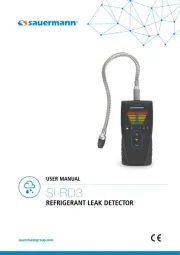
1 September 2025

20 Augustus 2025
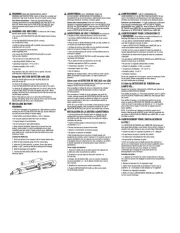
18 Augustus 2025

12 Augustus 2025
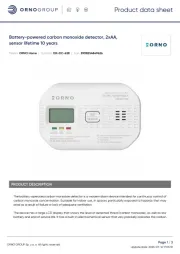
11 Augustus 2025
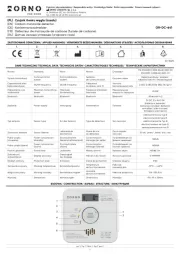
11 Augustus 2025
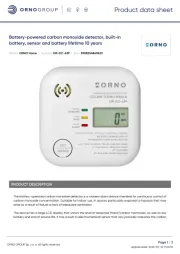
11 Augustus 2025
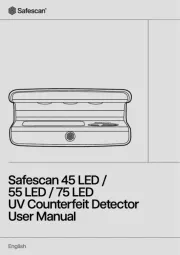
8 Augustus 2025

28 Juli 2025
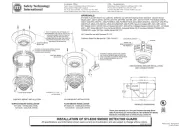
24 Juli 2025